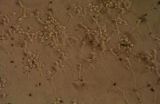(Press-News.org) Singapore, 19 April 2014 – A research team led by the National Neuroscience Institute (NNI) has uncovered a novel function of the Amyloid Precursor Protein (APP), one of the main pathogenic culprits of Alzheimer's disease. This discovery may help researchers understand how the protein goes awry in the brains of Alzheimer's disease patients, and potentially paves the way for the development of innovative therapeutics to improve the brain function of dementia patients.
The findings were published in the prestigious scientific research journal Nature Communications last month. The study, which is led by Dr Zeng Li and her team from NNI, involved investigators from Duke-NUS Graduate Medical School and the Agency for Science and Technology (A*STAR).
Alzheimer's disease is the most common form of dementia, which is set to rise significantly from the current 28,000 cases to 80,000 cases in 2030 among Singaporeans aged 60 and above. With a rapidly aging population, the burden of the disease will be profound affecting not just the person afflicted, but also the caregiver and family. While the exact cause of Alzheimer's disease remains unknown, one of its pathological hallmarks is clear – the clumping of APP product in the brain when the protein is abnormally processed.
Finding out more about APP can help researchers gain a better understanding of the disease, and potentially identify biomarkers and therapeutic targets for it. However up till this point, little was known about the APP's primary function in the brain.
The discovery – APP controls growth and maturation of brain cells
During this study, Dr Zeng and her team discovered that APP can control the growth and maturation of newborn brain cells, which are critical for the maintenance of a healthy brain function. APP does this by regulating a target known as microRNA-574-5-p. MicroRNAs are small molecules that influence the expression of human genes. The human body has many microRNAs to regulate the expression of different genes for proper cellular functions.
This study identified that microRNA-574-5p normally promotes the production of newborn neurons in the brain. In turn, the APP antagonises it to ensure the timely birth of new neurons to support normal brain function. In other words, the APP controls the growth and maturation of brain cells, without which neuron expression can go unregulated and cause brain activities to go haywire.
"Our findings highlight that microRNA-574-5p may be a potentially useful new target for drug development against Alzheimer's disease," said Dr Zeng Li, the principal investigator of the study. "We are just starting to understand how misregulated microRNA-574-5p expression can cause our brain activities to go wrong, and much more work needs to be done."
With this discovery, the research team intends to further their research by investigating the mechanisms of how the APP regulates microRNA-574-5p in association with the impairment of newborn neurons as seen in Alzheimer's disease. Eventually, they hope to develop the microRNA into a biomarker for the disease. And it does not just stop there – the finding also boosts the team's work on other neurodevelopmental conditions and brain disorders.
"Brain-specific microRNAs control neurogenesis during brain development, and their misregulation is implicated in other devastating psychiatric disorders like autism and schizophrenia," said Assistant Professor Shawn Je from Duke-NUS, a collaborator for this study. "So, this discovery also sheds light on ongoing collaboration work between our team and Dr Zeng's group to elucidate genetic and cellular mechanisms of autism."
Professor Stephen Cohen from A*STAR's Institute of Molecular and Cellular Biology, a world expert on microRNA biology, affirmed this discovery. He said, "This important study suggests a link between a key neurodegenerative disease gene and regulation of microRNAs in the brain. We are at an early stage of understanding how this microRNA might impact disease progression and associated behavior, but the prospects are exciting."
INFORMATION: END
NNI researchers discover novel function of protein linked to Alzheimer's disease
2014-04-21
ELSE PRESS RELEASES FROM THIS DATE:
Financial incentives help economically-disadvantaged pregnant smokers quit and improve fetal growth
2014-04-21
Smoking during pregnancy – particularly among economically-disadvantaged women – leads to a host of poor pregnancy outcomes, including miscarriage, preterm birth, SIDS, and additional adverse effects later in life. Without a formal treatment intervention, women in this population continue to smoke, and their babies suffer. Vermont Center on Behavior and Health Director Stephen Higgins, Ph.D., and colleagues, have developed an effective behavioral economic approach that offers women financial incentives for quitting.
The groups' most recent findings, published online ...
Big data poses great challenges and opportunities for databases
2014-04-21
Advances in the technology frontier have resulted in major disruptions and transformations in the massive data processing infrastructures. For the past three decades, classical database management systems, data warehousing and data analysis technologies have been well recognized as effective tools for data management and analysis. More recently, data from different sources and in different format are being collected at unprecedented scale. This gives rise to the so-called 3V characteristics of the big data: volume, velocity and variety. Classical approaches of data warehousing ...
Why alcoholism saps muscle strength
2014-04-21
(PHILADELPHIA) -- Muscle weakness is a common symptom of both long-time alcoholics and patients with mitochondrial disease. Now researchers have found a common link: mitochondria that are unable to self-repair. The results will be published online April 21 in The Journal of Cell Biology. The link to self-repair provides researchers both a new way to diagnose mitochondrial disease, and a new drug target.
Mitochondria -- organelles that produce the energy needed for muscle, brain, and every other cell in the body -- repair their broken components by fusing with other mitochondria ...
Amino-functionalized carbon nanotubes act as a carrier for nerve growth factor
2014-04-21
In recent years, there are growing studies concerning the use of different carrier materials for sustained-release and controlled-release of nerve growth factor in neuroscience research. In a study by Prof. Gao Li and team from Tongji Medical College, Huazhong University of Science and Technology in China, amino-functionalized ethylenediamine-treated multi-walled carbon nanotubes were used to prepare carbon nanotubes-nerve growth factor complexes by non-covalent grafting. Results showed that amino functionalization improved carbon nanotubes-nerve growth factor complex dispersibility, ...
People selectively remember the details of atrocities that absolve in-group members
2014-04-21
Conversations about wartime atrocities often omit certain details. According to research published in Psychological Science, a journal of the Association for Psychological Science, these omissions can lead people to have different memories for the event depending on social group membership.
"We started thinking about this project around the time when stories began to emerge in the popular media about atrocities committed by American soldiers in Iraq and Afghanistan," says lead researcher Alin Coman, psychological scientist at Princeton University.
"We wanted to scientifically ...
A new key to unlocking the mysteries of physics? Quantum turbulence
2014-04-21
The recent discovery of the Higgs boson has confirmed theories about the origin of mass and, with it, offered the potential to explain other scientific mysteries.
But, scientists are continually studying other, less-understood forces that may also shed light on matters not yet uncovered. Among these is quantum turbulence, writes Katepalli Sreenivasan, an NYU University Professor, in a special issue of Proceedings of the National Academy of Sciences.
Sreenivasan's introductory analysis, written with issue co-editors Carlo Barenghi of Newcastle University and Ladislav ...
Mental illness not usually linked to crime, research finds
2014-04-21
WASHINGTON — In a study of crimes committed by people with serious mental disorders, only 7.5 percent were directly related to symptoms of mental illness, according to new research published by the American Psychological Association.
Researchers analyzed 429 crimes committed by 143 offenders with three major types of mental illness and found that 3 percent of their crimes were directly related to symptoms of major depression, 4 percent to symptoms of schizophrenia disorders and 10 percent to symptoms of bipolar disorder.
"When we hear about crimes committed by people ...
Teachers' scare tactics may lead to lower exam scores
2014-04-21
WASHINGTON -- As the school year winds down and final exams loom, teachers may want to avoid reminding students of the bad consequences of failing a test because doing so could lead to lower scores, according to new research published by APA.
"Teachers are desperately keen to motivate their students in the best possible way but may not be aware of how messages they communicate to students around the importance of performing well in exams can be interpreted in different ways," said lead author David Putwain, PhD, of Edge Hill University in Lancashire, England.
The study, ...
Ginseng can treat and prevent influenza and RSV, researcher finds
2014-04-21
ATLANTA--Ginseng can help treat and prevent influenza and respiratory syncytial virus (RSV), a respiratory virus that infects the lungs and breathing passages, according to research findings by a scientist in Georgia State University's new Institute for Biomedical Sciences.
In a recent issue of Nutrients and an upcoming publication of the International Journal of Molecular Medicine, Sang-Moo Kang reports the beneficial effects of ginseng, a well-known herbal medicine, on human health.
Kang's primary research focuses on designing and developing effective vaccines against ...
New material coating technology mimics nature's lotus effect
2014-04-21
VIDEO:
This movie explains the new coating material.
Click here for more information.
Ever stop to consider why lotus plant leaves always look clean? The hydrophobic – water repelling – characteristic of the leaf, termed the "Lotus effect," helps the plant survive in muddy swamps, repelling dirt and producing beautiful flowers.
Of late, engineers have been paying more and more attention to nature's efficiencies, such as the Lotus effect, and studying its behavior in order ...

